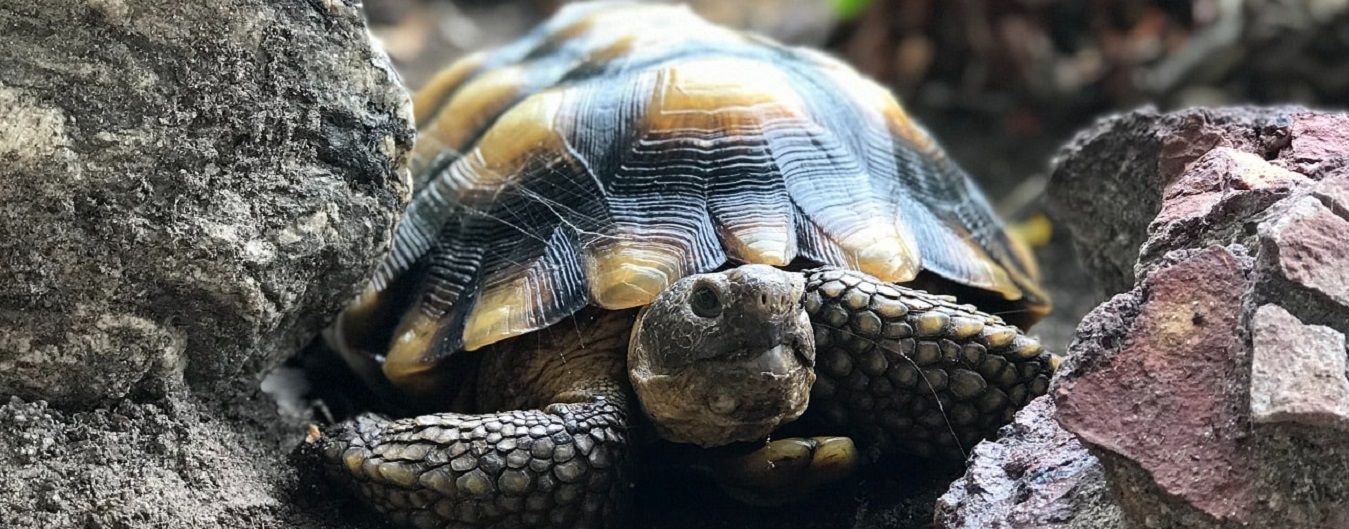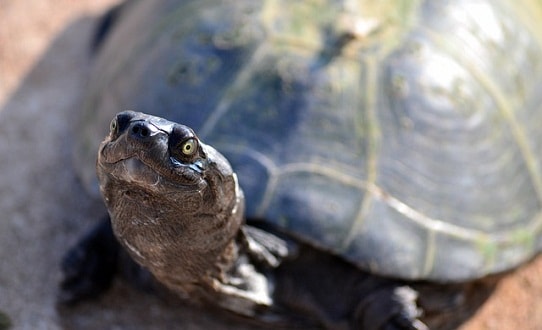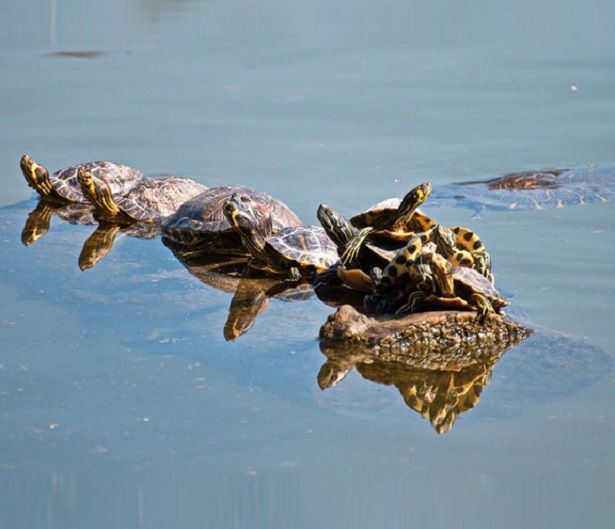

Turtles are intelligent, interesting creatures that come in a variety of species. One of the most common turtles kept domestically is the red-eared slider. Turtles generally live in water but must be provided with a dry dock area, as well. Specific behavioral, environmental, and nutritional requirements for turtles vary, depending on species. An exotic animal veterinarian can educate you regarding the requirements of your specific pet. Since turtles’ body temperatures (and as a result, their immune systems, digestion, and behavior) are regulated by the temperature of their surroundings, you must learn the requirements for your turtle species. Regardless of species, all turtles carry Salmonella bacteria; thus, care must be taken to wash hands after handling any turtle.
Aquatic turtles (live in water): sliders, painted, map, cooter turtles.
Semi-aquatic turtles (live near water): box, wood turtles.
For most turtles, an aquarium works well. A young, red-eared slider can be housed in a 20-gallon aquarium, to start. In general, 10-12cm turtles each require 2.5 square feet of space. Turtles 20cm or longer need a minimum of double this amount of space.
Water should be at least 1.5 to 2 times the top shell (carapace) length, and tanks should have several inches of air space between the water surface and the tank top to prevent escapes and predation by other pets, such as cats and dogs. Since turtles defecate frequently, a water filtration system should be used to maintain water cleanliness.
Weekly water changes are also required to keep the water clean. Feeding turtles in an enclosure separate from their living enclosure can help minimize water soiling. Heat must be provided by an over-the-tank ceramic heat bulb, an under the tank heater, or a submersible heater.
An out of the water basking zone should be provided with a bulb focused over this area. Ideally a second dry dock area should be at the cooler end of the tank. Water temperatures must be maintained within particular ranges specific to given species. Several thermometers should be used to measure temperatures both in and out of the water.
Ideally, a heat gradient, with the warmest temperature in the basking zone (29-32 Celsius for red-eared sliders), and the coolest temperature farthest from this zone, should be offered. For red-eared sliders, water temperature should range approximately 23-29 Celsius, but never fall below 23 Celsius.
Some turtles are herbivores (eat only plant matter), others are carnivores (eat only animal matter), and some are omnivores (eat both plant and animal matter). An exotic animal veterinarian can educate you as to the specific dietary needs of your particular turtle. Adult red-eared sliders are omnivores. Their diet should be made up of about 50% commercial aquatic pelleted turtle diets diets (i.e. Mazuri® turtle pellets and gel diets, Reptomin®)and live fish and insects (guppies, goldfish, tubifex worms, and earthworms), appropriate to their size. Live fish prey are preferable to frozen fish, as fish frozen for longer than 3 months lose nutrients (eg Thiamin) and can cause nutritional deficiencies
The other 50% can include plant matter in the form of chopped leafy greens (Asian greens such as kangkong, kale, romaine, red and green leaf lettuce, parsley, dandelion and mustard greens, zuchinni, carrot, and squash) and a small amount of fruit. They are generally fed every 2-3 days. Young, growing red-eared sliders are more carnivorous and eat mainly turtle pellets or live fish every day. They accept more vegetable matter as they age.
For carnivorous turtles, if the diet is at least 30% or more commercially prepared products (such as pellets), supplements generally are not necessary
For more omnivorous species, especially those consuming a lot of vegetables, supplement with calcium 2-3 times a week (but make sure it’s phosphorus-free)
Juvenile turtles should be offered a calcium supplement without vitamin D dusted on their greens every day when they are growing
All turtles should be examined by an exotic animal veterinarian both just after they are acquired, to ensure that husbandry and feeding requirements are being met, and annually to make sure turtles stay healthy. In general, all turtles carry some gastrointestinal parasites. Thus, their feces should be checked, and they should be de-wormed at least once. Proper preventative medicine, particularly with reptiles, whose health depends so much on their environmental conditions, is essential to helping ensure your turtle’s well-being.
